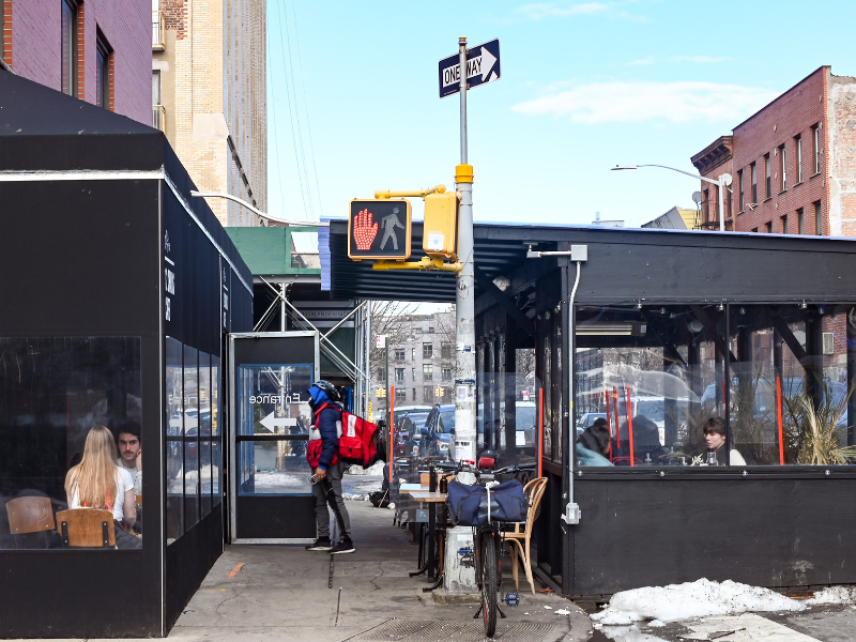Report Sees Economic Gains in Low-Income Communities From NYC's COVID-era Open Restaurants Program
New York City’s outdoor dining initiative drove a 12-fold increase in the dining scene, with more than 12,000 cafes, bars, and restaurants setting up tables on sidewalks or in parking lanes since the program was launched in June of 2020 due to the COVID-19 pandemic, according to an evaluation from NYU Wagner's Professor Mitchell Moss and Dominic Sonkowsky (MUP 2023).
The new report compares New York City’s older, pre-pandemic Sidewalk Café outdoor dining program with its replacement, Open Restaurants. It highlights how Open Restaurants has led to new outdoor dining opportunities outside Manhattan, in communities that had no prior outside dining options, and in communities of color and low-income neighborhoods as well.
Among the findings:
- The four boroughs outside Manhattan collectively have 51% of Open Restaurants sites, compared to 30% under the city’s pre-pandemic Sidewalk Cafes program.
- Communities of color have doubled their share of New York City’s outdoor dining establishments, while low-income communities have nearly doubled their share.
- The 17 Community Districts that had no outdoor dining under the Sidewalk Café program now have outdoor dining under Open Restaurants.
- NYC's previous Sidewalk Cafe program had 1,000 permit holders but after the COVID-19 pandemic hit, the city loosened regulations and took away the period of public review and allowed 12,000 restaurants to join the new program rebranded as Open Restaurants.
- The city cut out the fees associated with the Sidewalk Cafe program- which could be up to thousands of dollars based on square footage- which allowed smaller restaurants to apply in lower-income neighborhoods.
- The new Open Restaurants has distributed outdoor dining more equitably between boroughs instead of its predecessor.
“This remarkable growth in communities across the city would not have been possible under New York City’s pre-pandemic Sidewalk Café program,” the authors write. “Under that program, cafes, bars, and restaurants seeking outdoor seating had to undergo a lengthy review process and pay steep revocable-consent fees, assuming their zoning allowed it.”
